

In the same way that the words “Velcro” or “Kleenex” are used to describe categories of products, “Therm-a-Rest” has become synonymous with lightweight sleeping pads. Rather than sit back and let the products sell themselves, however, the Seattle-based company remains a leading innovator. In 2016, they released a game-changing technology: a special SpeedValve that enables one to inflate a large sleeping pad in 4 breaths. We tested the lightest version, the NeoAir XLite Max SV, and came away impressed with the technology but it’s not without quirks. Read below for our full review, and to see how this pad stacks up to the competition, see our article on the best backpacking sleeping pads.
Essentially, the NeoAir XLite Max SV is the popular NeoAir XLite pad, but with the addition of the SpeedValve (hence the “SV” in the name) for easier inflation. The valve will be the main topic of this review as it is what sets this pad apart. There is, however, another difference worth noting: the XLite Max SV is rectangular rather than tapered, giving it a larger sleeping platform but with a slight weight penalty.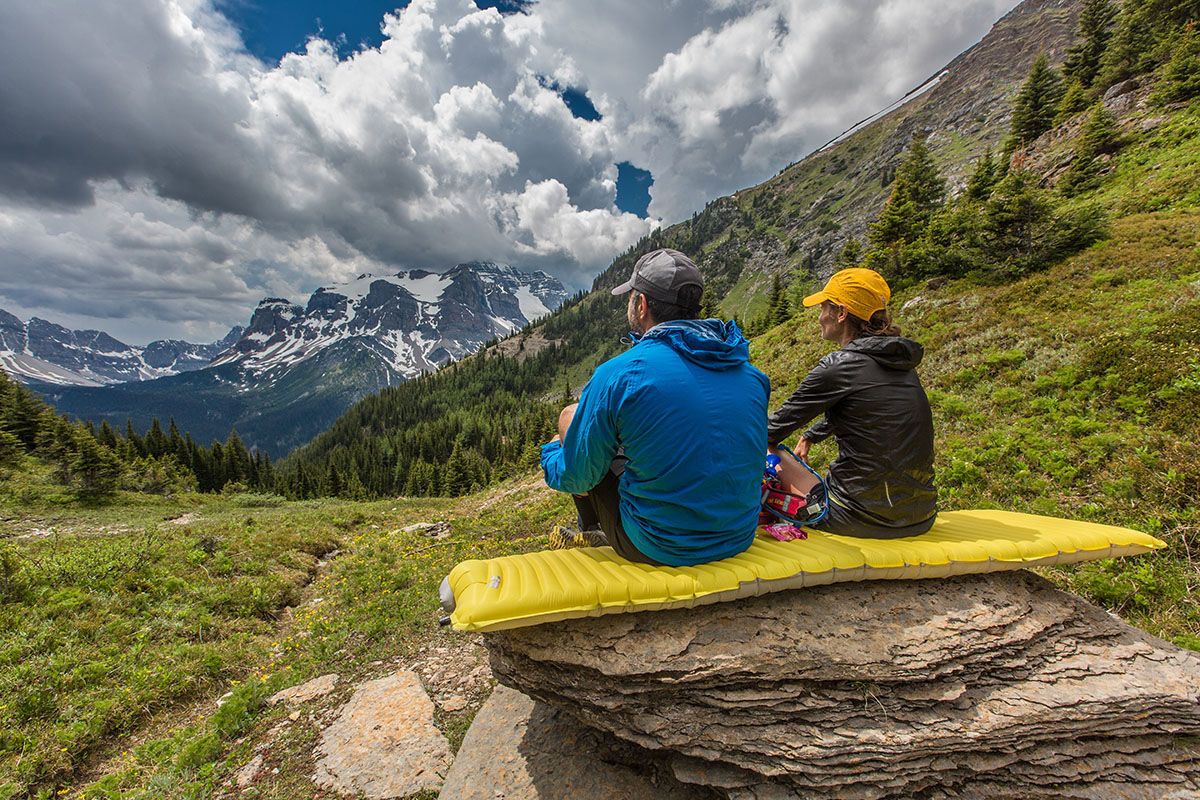
Just like the regular NeoAir XLite, the SV inflates to 2.5-inches thick, provides an insulation R-value of 3.2, and the fabric is 30 denier. The R-value puts it solidly into the 3-season designation (you can see our complete discussion of R-value here), but the 30D is quite thin, allowing it to remain lightweight at 1 pound for the regular length.
Ultralight products meant for moving quickly in the backcountry delicately balance weight and durability. I am a bit of a weight junkie, but do have concerns about the durability of the fabric. In fact, it punctured on my third night on it. Thankfully the pad comes with a repair kit and I was able to patch it. Despite numerous trips since, it has not punctured again. Having said that, I have had earlier iterations of Therm-a-Rest products and none have ever punctured, so perhaps I was simply unlucky.
The highlight of this pad’s construction is the valve. It’s difficult to describe and best illustrated in pictures, but there is a very large opening at the top with a rubber-like valve that is tucked into the sleeping pad. When you blow into the valve from several inches away, the laws of physics are such that more air than was contained in your breath ultimately enters the sleeping pad. Therm-a-Rest’s website explains it well: “Every breath pulls in surrounding air molecules to amplify the airflow and inflate the mattress faster and with less effort than with traditional valves.” Sounds simple, right? It actually is. As soon as it arrived, and although the process felt odd at first, within 4 breaths the pad was inflated.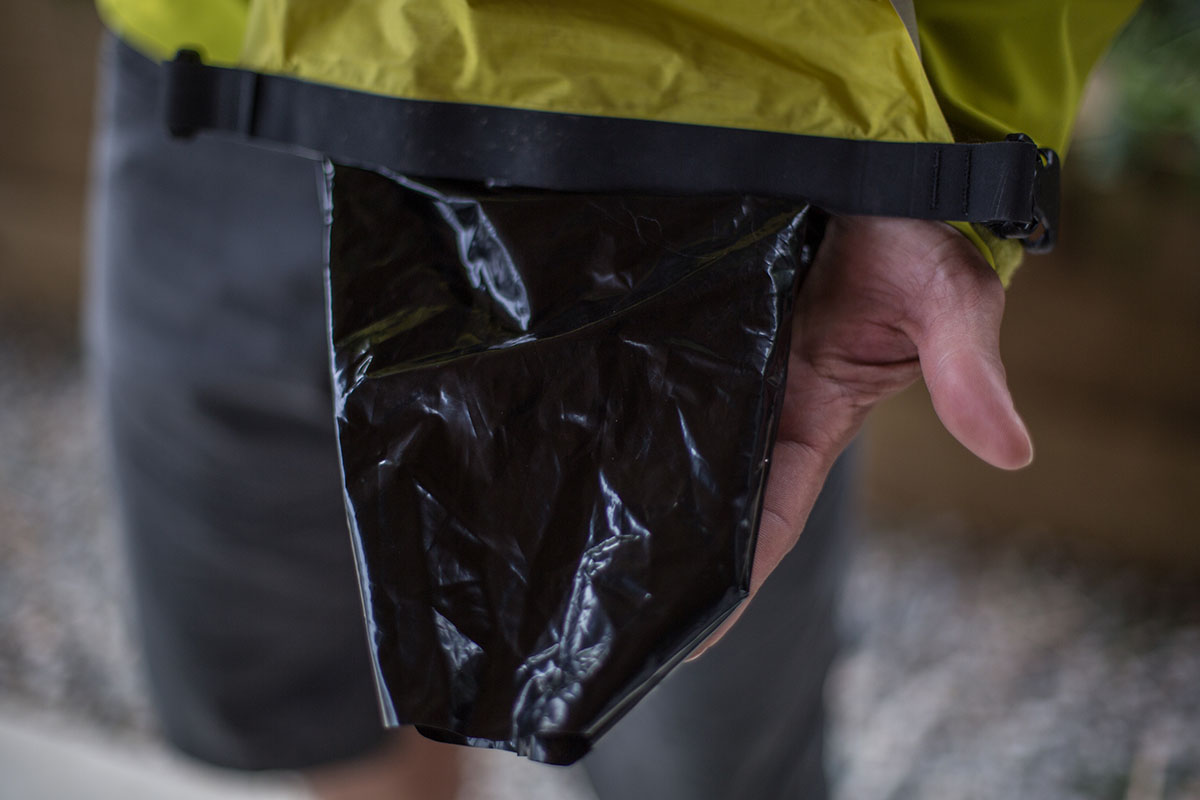
The valve was impressive from the start, but the real tests occurred in the backcountry. My wife and I love endurance events and this crosses over into our recreational time. Our typical trips involve long days and large distances. Whether we are on foot or our bikes, we arrive at our destinations absolutely knackered and out of breath. This is where the SpeedValve shines. Anyone who has ever inflated a mattress with lung power has experienced the accompanying light-headedness. When car camping, this feeling is merely unpleasant, but following physical exertion it can be downright challenging.
Our first insight into this occurred on a recent self-supported bikepacking trip. We arrived at our camp along the White Rim trail in Moab exhausted after riding 60 miles in 95-degree heat. I easily inflated the NeoAir XLite MAX SV and we both collapsed onto it. The thought of manually inflating our other mattress was unappealing until we had fully recovered several hours later. The SpeedValve truly is a game-changer for inflation. There also is an “auto-reversing” component to the valve, which makes it simple to deflate and pack away.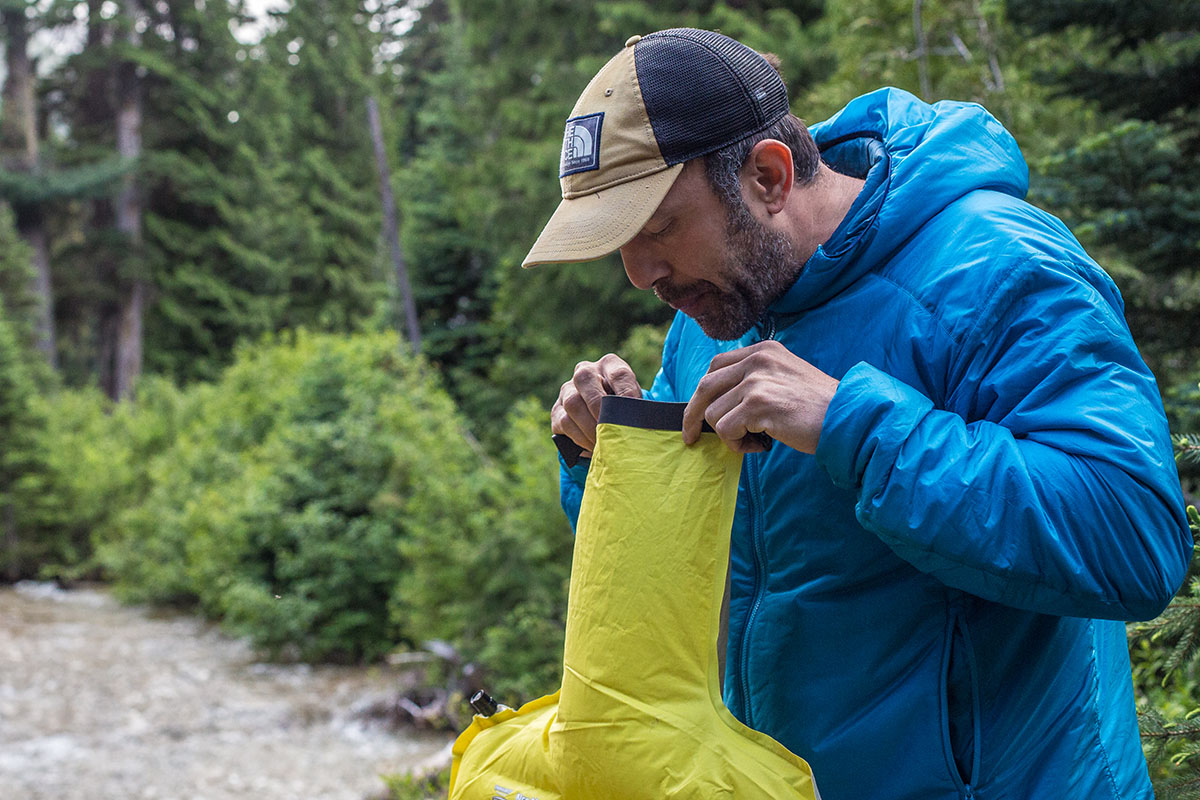
Unfortunately, while the SpeedValve is this sleeping pad’s best feature, it also can be its downfall. The instructions clearly state that after inflating the mattress, the neck should be rolled 7 times and then clipped shut. I have learned that it in addition, it’s crucial to tuck the inner flap fully into the pad before rolling it up as it can break the seal. This exact recipe is prone to user error and I have had a few nights in which the pad slowly deflated while I slept. Re-inflating while still laying on it is not an easy task, so the interruption to a good night’s sleep is problematic. While I am willing to admit user error, it is worth noting that shutting the valve can be finicky.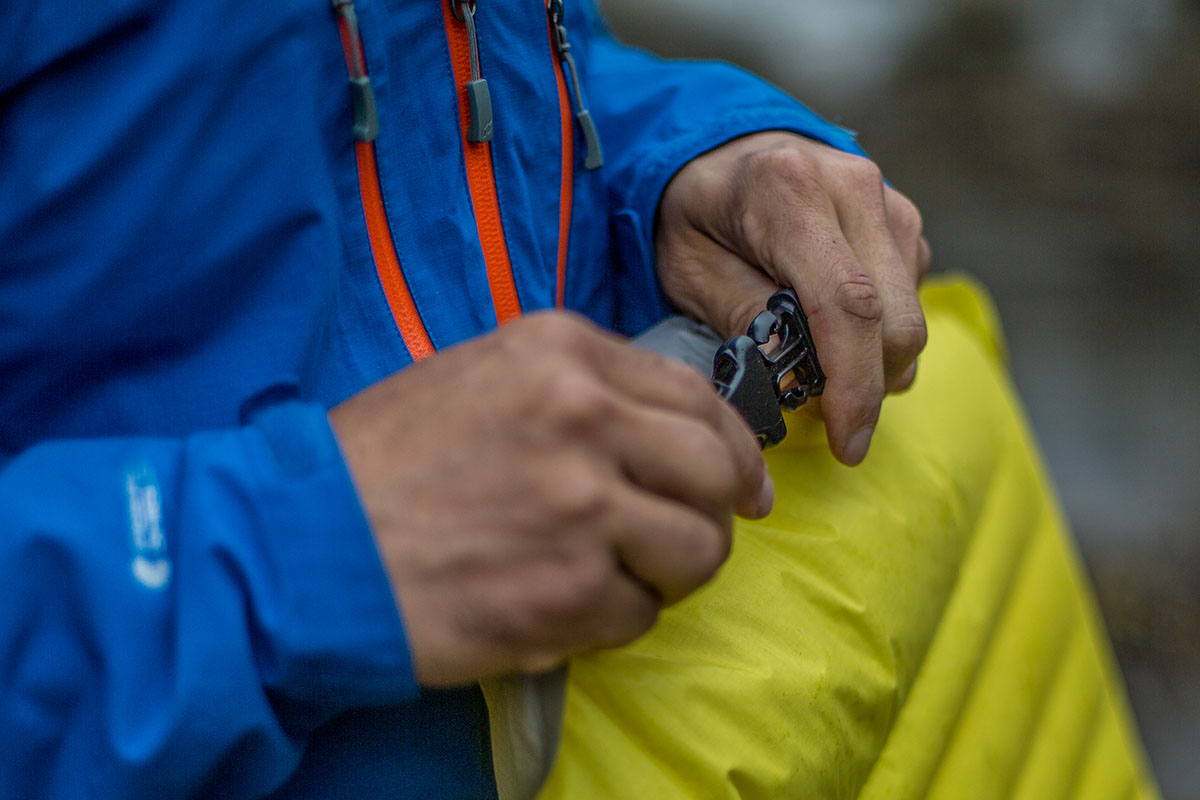
I have always found that 2.5 inches of thickness allows for a comfortable sleep, but getting the perfect amount of air takes a bit of trial and error. Though the SpeedValve is the prominent means of inflating the mattress, the pad also has the manual valve found on other Therm-a-Rest products, which makes adjusting the firmness fairly easy.
I tried the “L” or long version of this pad, which is 77 inches in length (the regular is 72 inches). The extra length was nice to have and still fit easily in my bivy and tent. Those wanted to drop 5 ounces could opt for the regular length. I also prefer the tapered, mummy shape to further trim weight.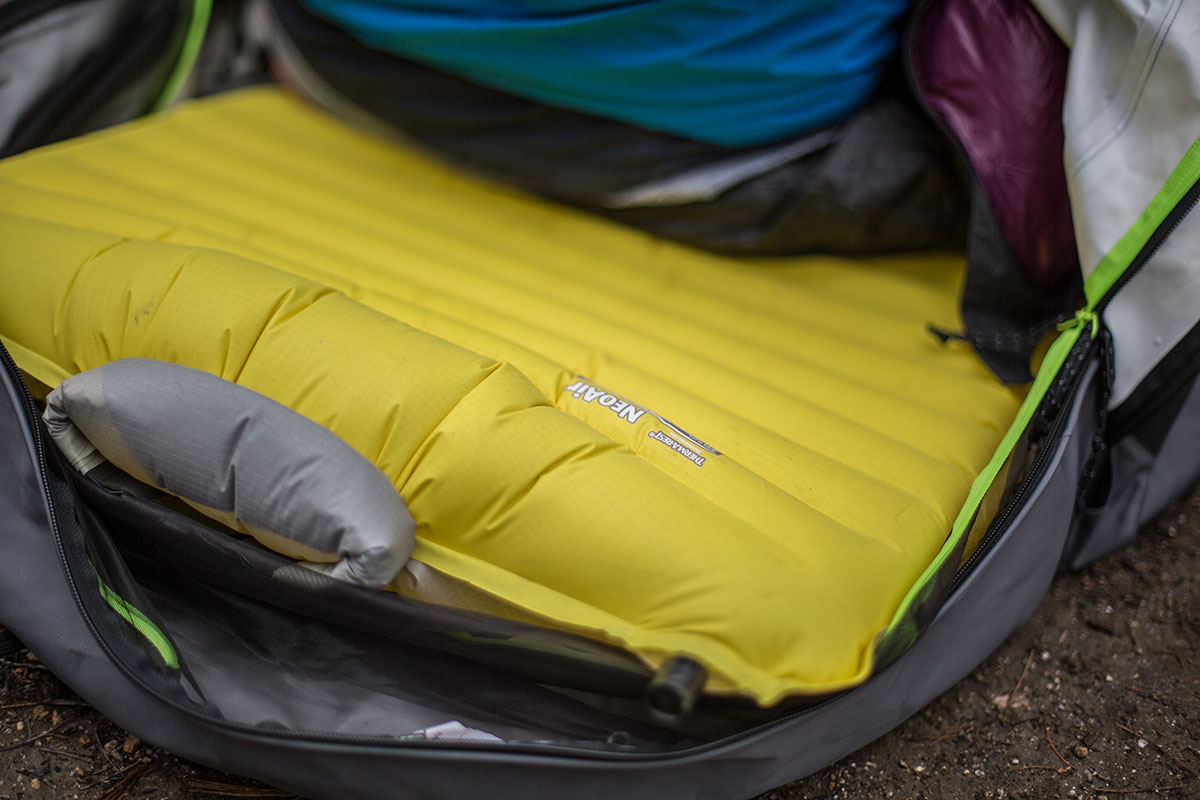
Some backpackers complain about the noise caused while shifting on NeoAir mattresses, but to be honest, I simply see this as part of backpacking. Given the materials and weight-saving internal baffles, I accept that mattresses make sounds that our beds at home do not. I have also found that the “crinkly” sound has diminished over time.
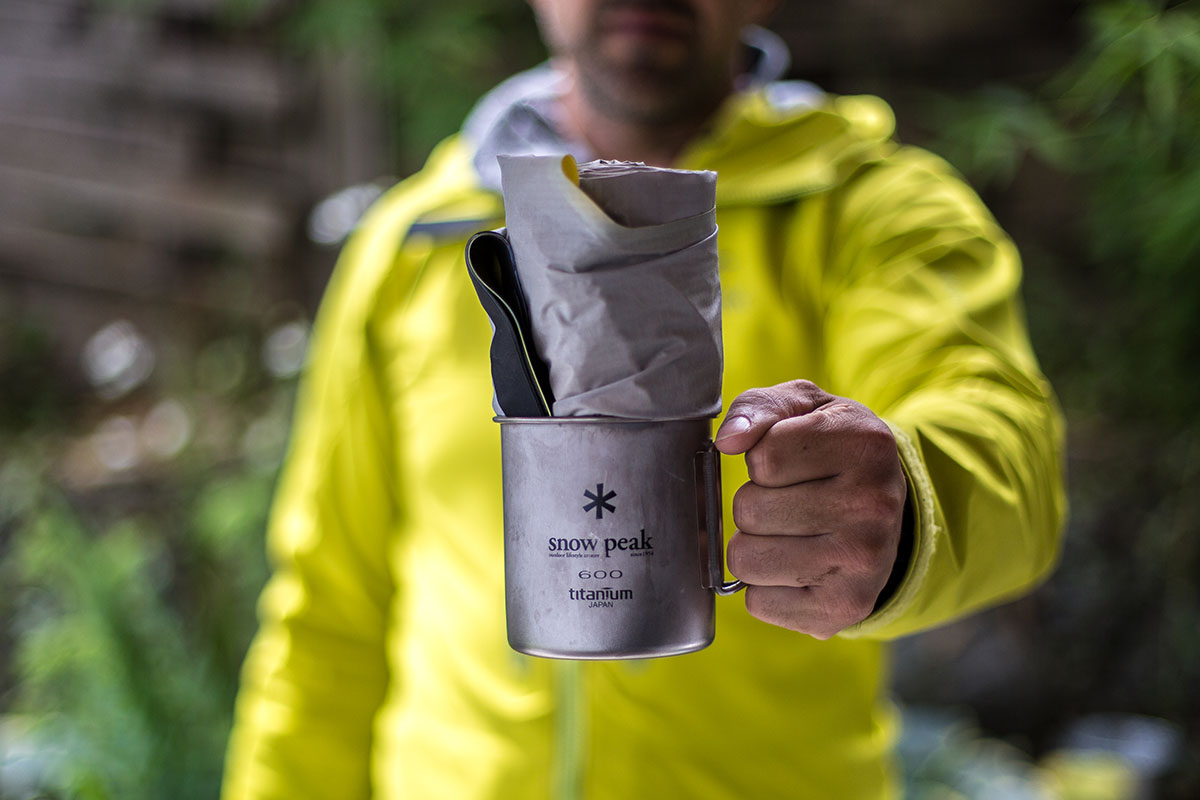
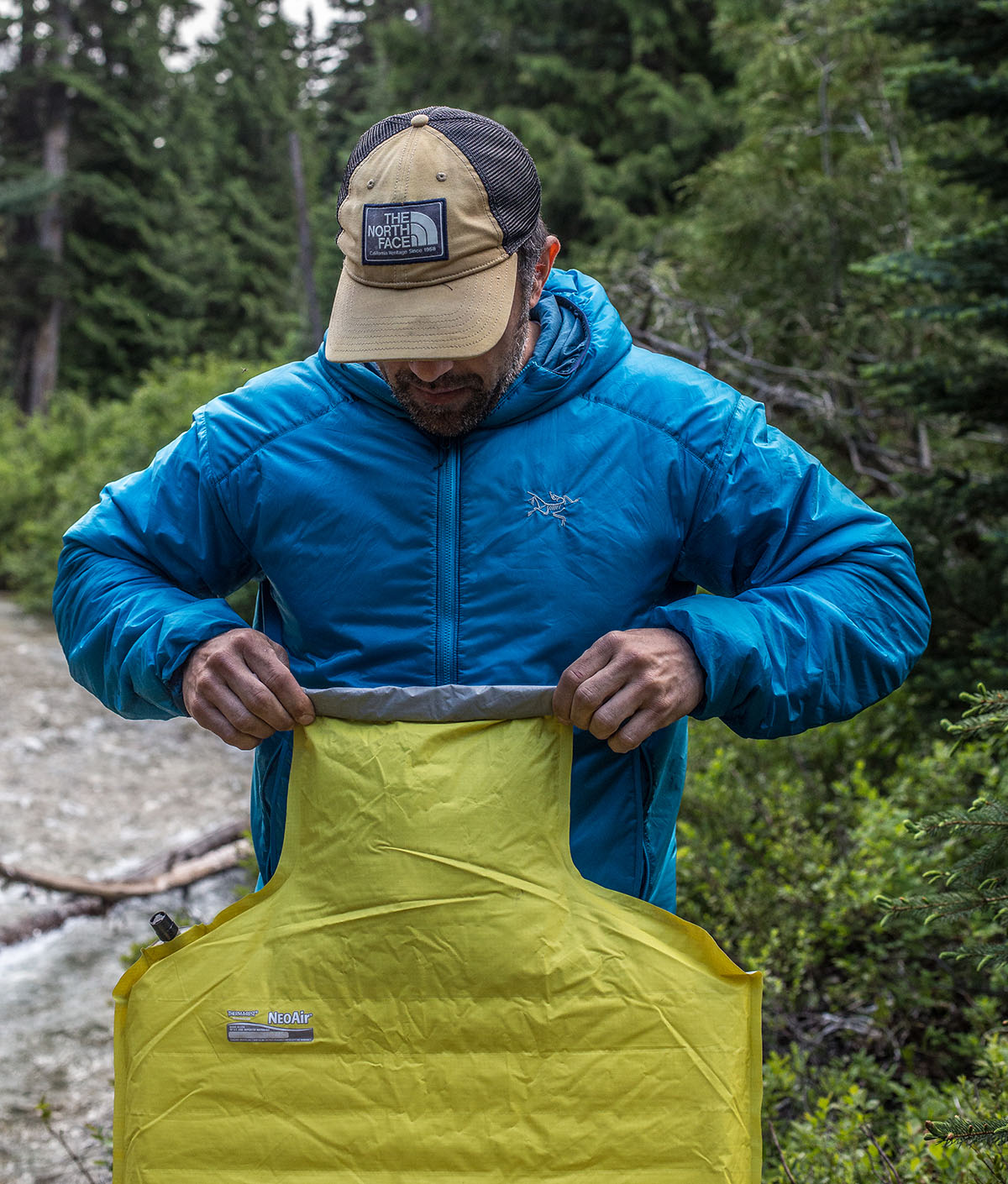 NeoAir mats have topped our backpacking sleeping pad list for years because of their unbeatable combination of comfort, weight, and insulation. For many, the decision may come down to which version of the NeoAir is best rather than looking to other brands.
NeoAir mats have topped our backpacking sleeping pad list for years because of their unbeatable combination of comfort, weight, and insulation. For many, the decision may come down to which version of the NeoAir is best rather than looking to other brands.
The NeoAir XLite is the lightest and thinnest design, with 30-denier for both the top and bottom fabric, but the puncture mentioned above was our first ever. For weight-conscious shoppers, we still give the edge to the standard 12-ounce NeoAir XLite over the XLite Max SV, as 4 ounces is not insignificant. Winter campers should opt for the 15-ounce NeoAir XTherm, which has an amazing R-value of 5.7 (there is no SpeedValve version), while the NeoAir Trekker is the value pick at $130 and 18 ounces. For those excited about trying the SpeedValve, we think the mid-range NeoAir Trekker SV makes the best case—the XLite Max SV sacrifices the XLite’s biggest appeal: weight savings.
Looking outside of Therm-a-Rest, no other brand has invested in such an innovative inflation system, but Sea to Summit makes the most comfortable pad we’ve slept on. The 300 AirSprung cells in the Comfort Lite Insulated give it very plush cushioning. However, it’s much heavier at 1 pound 5 ounces, and we aren’t sold that the fabric is durable enough. We popped the pad beyond repair on our first trip out, but are planning to give it another go with a follow-up test shortly.
Currently, 2 other NeoAir pads have SpeedValve technology. The NeoAir Trekker SV mentioned above is both cheaper and heavier, but at 1 pound 8 ounces, can still be used for most backpacking trips. And the 75-denier fabric should hold up better to punctures. For camping close to your car, the NeoAir Camper SV is a full 3-inches thick (the others are 2.5 inches) and better for side sleepers, but weighs far too much to be carried in a pack. No matter the variant, the SpeedValve undoubtedly is an impressive piece of technology, and one we hope Therm-a-Rest will continue to work on and implement into more air pads.